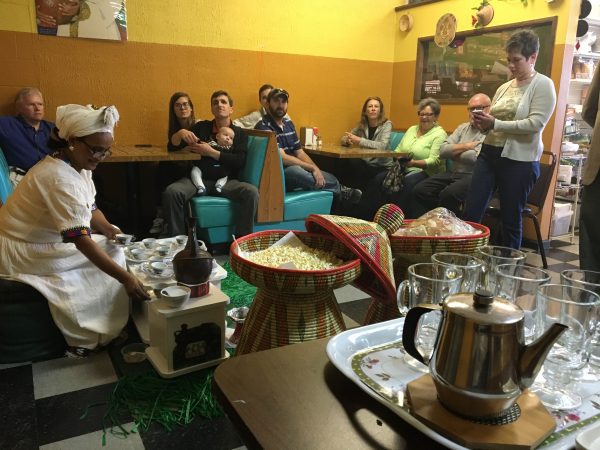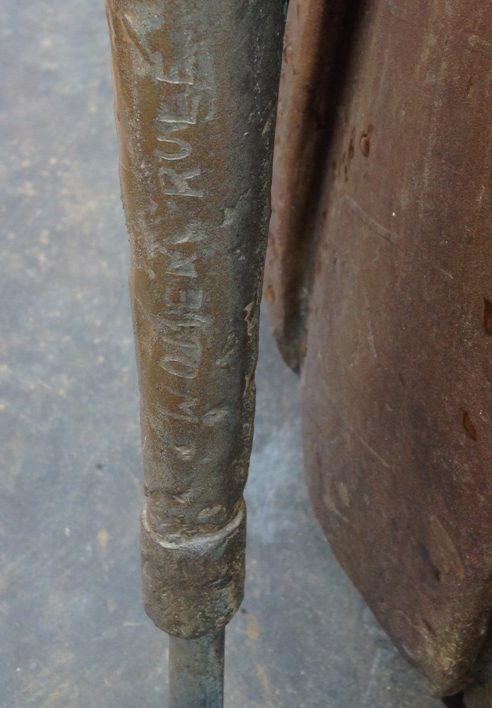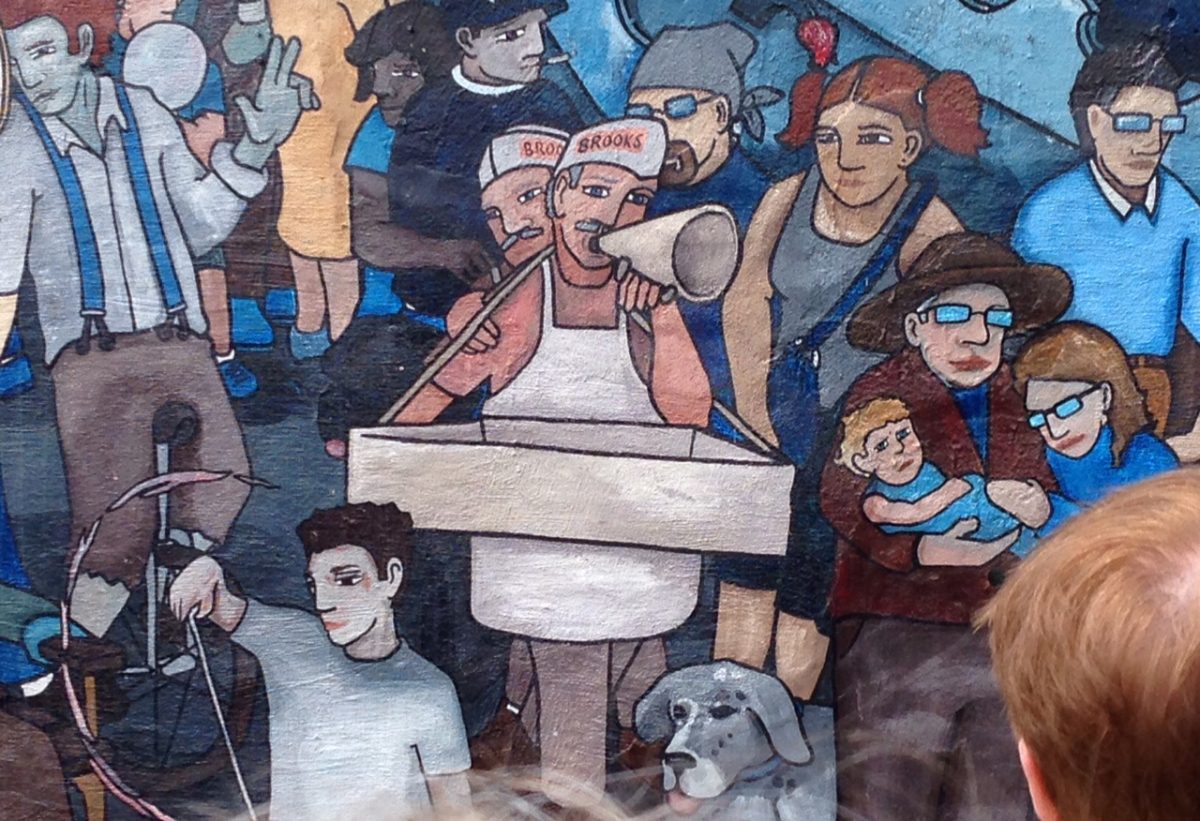A month of good walks, unspoiled

[highlightrule]Charlotte neighborhoods have plenty of stories to tell, and during a month of City Walks hundreds of participants heard some of them. See photo slideshow at end of article.[/highlightrule]
The secret inscription on a statue of an almost forgotten Charlotte heroine. A teacher who gave her life in 1931 trying to save a student. The twin owners of a NoDa burger joint, memorialized in a mural. And the four, count ’em, four different kinds of baklava at an east Charlotte bakery.
We know Charlotte’s neighborhoods have plenty of stories to tell, and hundreds of people who came along on a month of City Walks learned some of those stories.
|
GRANTS AVAILABLE FOR CITY WALK PARTICPANTS. DEADLINE JULY 22. |
PlanCharlotte partnered with seven other local organizations to organize 21 walks through Charlotte neighborhoods, starting in April with a history walk through the Elizabeth neighborhood and ending May 29 with a bike ride along the Rail Trail that flanks the city’s light rail tracks. In between, the walks took place in a diverse collection of neighborhoods, among people of differing ages, backgrounds and ethnicities. We attended almost all of those walks, learning alongside the other participants. Some of the things we learned were about historic tidbits, now-demolished landmarks or neighborhood art works you might miss driving by.
But we also learned how much enthusiasm some newcomers to Charlotte have for learning about this city they now call home. We met a retired couple who moved from New Jersey to Mount Holly who attended almost every walk. On a walk through Dilworth neighborhood Mary met a newcomer from suburban Chicago, and a few days later, on a walk through the Elizabeth neighborhood she met a couple from suburban Chicago who turned out to be his parents.
Brothers Scott and David Brooks (wearing white aprons) are part of Will Puckett’s mural in NoDa. Click on image to go to photo slideshow at end of this article. Photo: Mary Newsom
Of course some of the walk participants were long-time residents who could add personal stories along the way. They, too, made the experience more powerful.
[highlight]“Cities aren’t structures; cities are people.” — Edward Glaeser, economist and author[/highlight]
We and the walk participants made some interesting connections simply by meeting people and chatting informally during the walks. That’s one important but sometimes overlooked benefit of activities like the City Walks: enriching out field of acquaintances and helping us feel more rooted in the place where they live. And that has value beyond just social networking.
As economist Edward Glaeser wrote in his 201 book, The Triumph of the City, it’s the proximity to other people, a characteristic of dense cities, that spurs innovations—an important component for a healthy economy. “Cities … are proximity, density, closeness,” Glaeser writes. “… For centuries innovations have spread from person to person across crowded city streets … and urban density has long been at the heart of that process.”
Glaeser’s observation sums up what we observed during a month of City Walks: “Cities aren’t structures; cities are people.”

Carved into the umbrella at the Jane Wilkes statue is “WOMEN RULE.” Photo: Mary Newsom
About that secret inscription? It says “Women Rule” and it’s on the folded umbrella Jane Renwick Smedberg Wilkes holds in the Trail of History sculpture of her at East Morehead Street and Harding Place near the Little Sugar Creek Greenway. Wilkes is the largely forgotten woman who helped found Charlotte’s first hospital. The artist was Wendy M. Ross of Bethesda, Md.
The teacher who gave her life was Lillian Arhelger, “who met death in a heroic attempt to rescue a child from Glen Burnie Falls, Blowing Rock, North Carolina,” according to the plaque at the Lillian Arhelger Memorial in Independence Park, beside Hawthorne Lane near Seventh Street. She died June 10, 1931, trying to save 10-year-old Virginia Baxter, who slipped on the slick bank and fell over the falls. Lillian Arhelger went in after her and slipped over the falls too. She was a physical education teacher at Central High School. Virginia landed in some sand and lived. Lillian Arhelger did not. Students went door to door to raise money for the memorial. (Virginia’s father, H.H. Baxter, went on to be mayor of Charlotte.)
The twin brothers, painted into the Will Puckett mural of NoDa denizens on the side of Jack Beagles, are David and Scott Brooks, longtime owners of Brooks Sandwich House on North Brevard Street near North Davidson Street.
The four kinds of baklava: At
